Yemen: Insurgency and nightmare
-
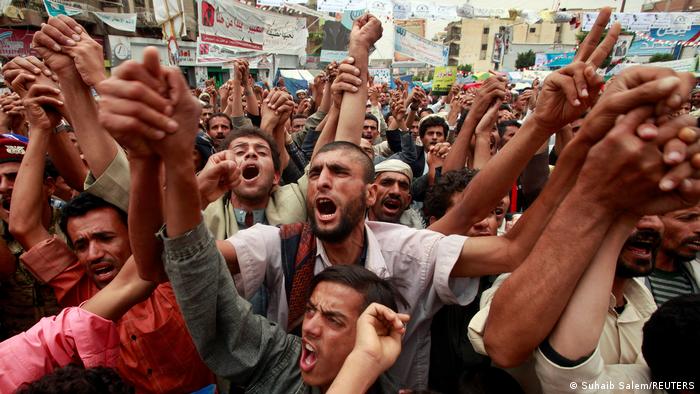
Anger and hope: ten years ago, as of February 2011, Yemenis took to the streets to protest against the repressive regime of President Ali Abdullah Saleh. A year after the protests, in January 2012, he resigned. But the renunciation of his mandate did not bring peace to the country – the internal tensions and rivalries were too great and led to new violence in the same year -

Rebellion in the north: in 2012, the Houthis living in the north of the country rose up. While they initially advocated greater autonomy, they made more and more claims to power over the course of the war. The Iranian-backed Houthis are accused of serious human rights violations. In the picture, sympathisers demonstrate against the USA, which declared the Houthis a terrorist organisation earlier this year -
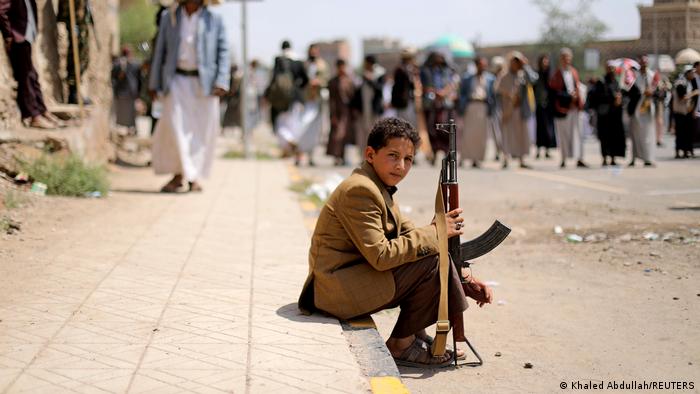
Childhood under fire: even the youngest suffer under the war. Many children have become orphans, others forced to serve in the armed forces, especially on the side of the Houthis. Military service has taken the place of school. Young people are being deprived of their opportunities, creating a lost generation -
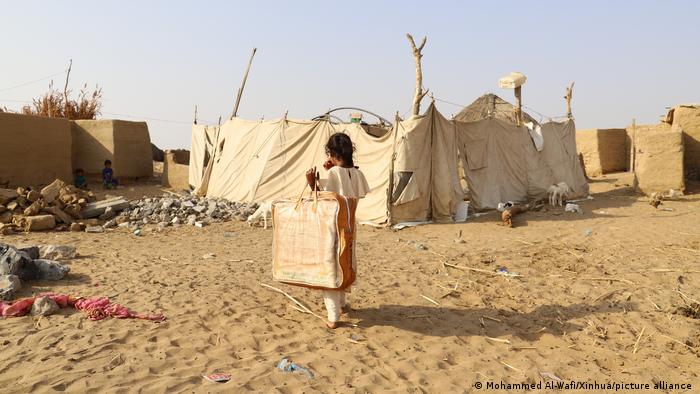
A humanitarian catastrophe: hunger, misery, displacement – the war in Yemen has triggered an enormous humanitarian catastrophe. More than three and a half million people are roaming the country as internally displaced persons, almost two million children are acutely malnourished, 24 million Yemenis are dependent on humanitarian aid -
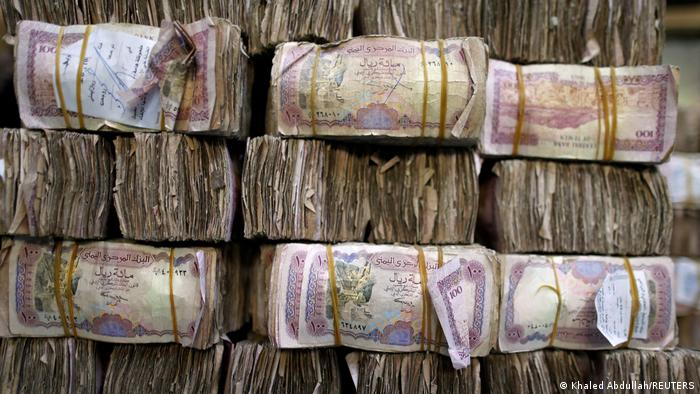
Inflation: the war is also affecting the Yemeni currency, the rial. While one U.S. dollar cost 215 rial in 2014, five years later it was 570 rial. For many Yemenis, already impoverished by the war, even basic foodstuffs have become unaffordable. The Yemeni postal service paid its employees with these bundles of money in January 2017 -
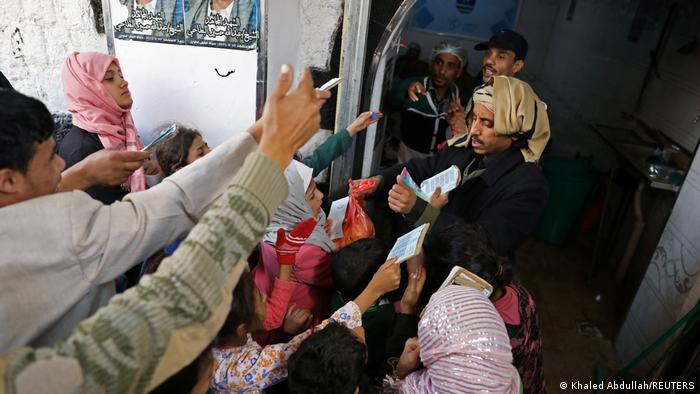
Hunger: the war has turned many people into aid recipients. The country's borders, including those to the sea, are often impassable because they are controlled by rebels and militias. This makes it increasingly difficult for aid organisations to provide the people themselves with the most basic necessities. Here in the picture, aid workers distribute food vouchers to those in need -
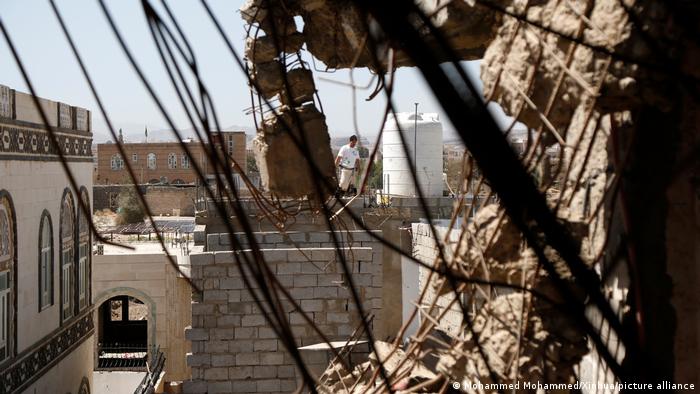
Battered city of Sanaa: the Yemeni capital has also been severely damaged over the course of the war. In 2015, it was the target of massive airstrikes by the Saudi Arabia-led international coalition fighting on the side of the Yemeni government. It also flew attacks against the insurgent Houthis in Sanaa. For their part, the Houthis have also carried out heavy attacks on the city and its inhabitants -
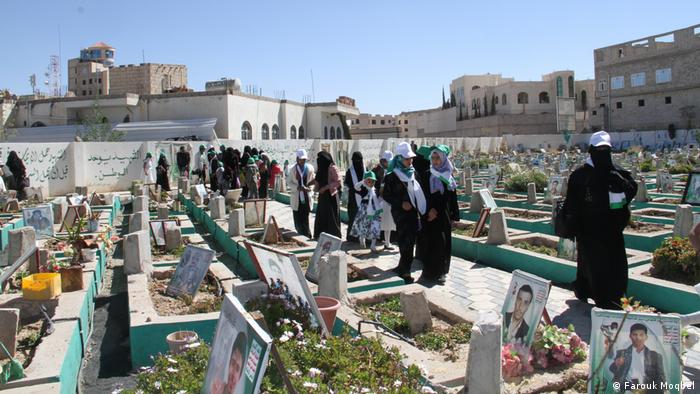
Mourning for the dead: the war has cost many lives. According to United Nations estimates, more than 230,000 people have died so far, more than half of them civilians who died while fleeing, through poverty or malnutrition. Several thousand innocent people have died as a result of armed violence, including around a thousand children -
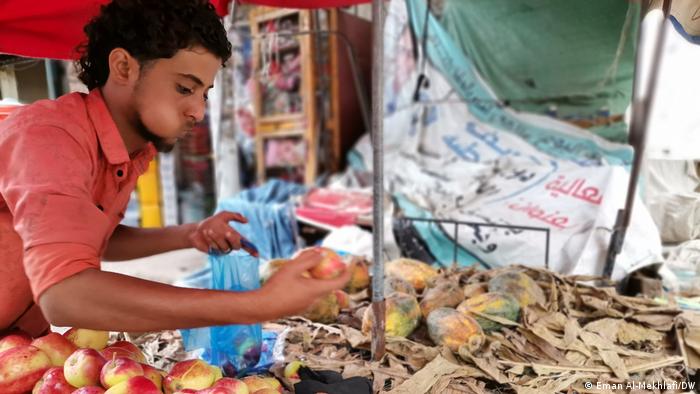
Market and trade: in some regions, agriculture is still possible despite all the violence. This trader at the market of Taiz in the south-west of the country sells what the traders deliver to him. He himself consumes what is perhaps the country's most characteristic agricultural product: Kat, a herb that is chewed to produce a mildly intoxicating effect -
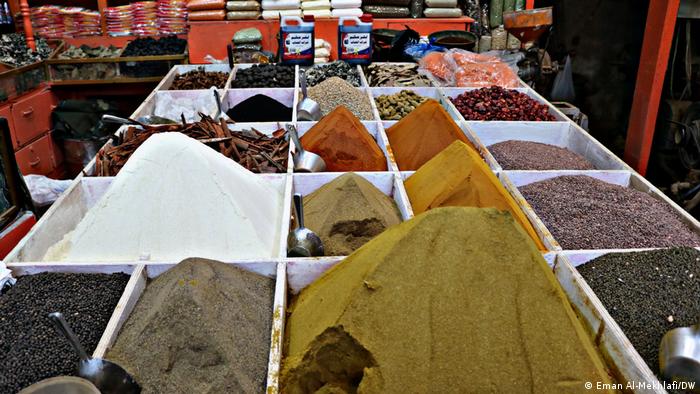
A blaze of colour: for centuries, Yemen was a central station in the spice trade between India and the Arab world. Although it lost this position with the discovery of the sea route to India, the legacy of this "spice route" is still present in Yemeni cuisine today. It adorns a trader's stall at the Taiz market in December 2020 -
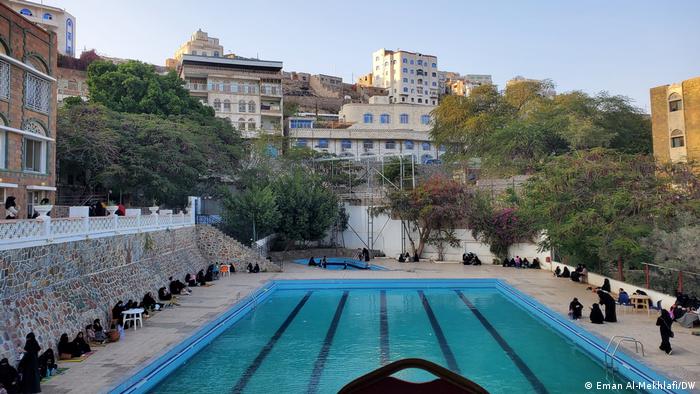
Water and hope: not everything has been destroyed by the war. In Taiz, this public swimming pool has been preserved and still serves as a meeting place. It is quite conceivable that it also has a symbolic function, reminding visitors that there is something else besides war – that life still offers some small pleasures, despite the violence
https://qantara.de/en/node/11121
Link
To all image galleries